Lesson 004 – Gears
You need:
iTriangle MASTER online, IR gate, buzzer and construction set
|
|
|
||
|
Infrared gate |
Buzzer |
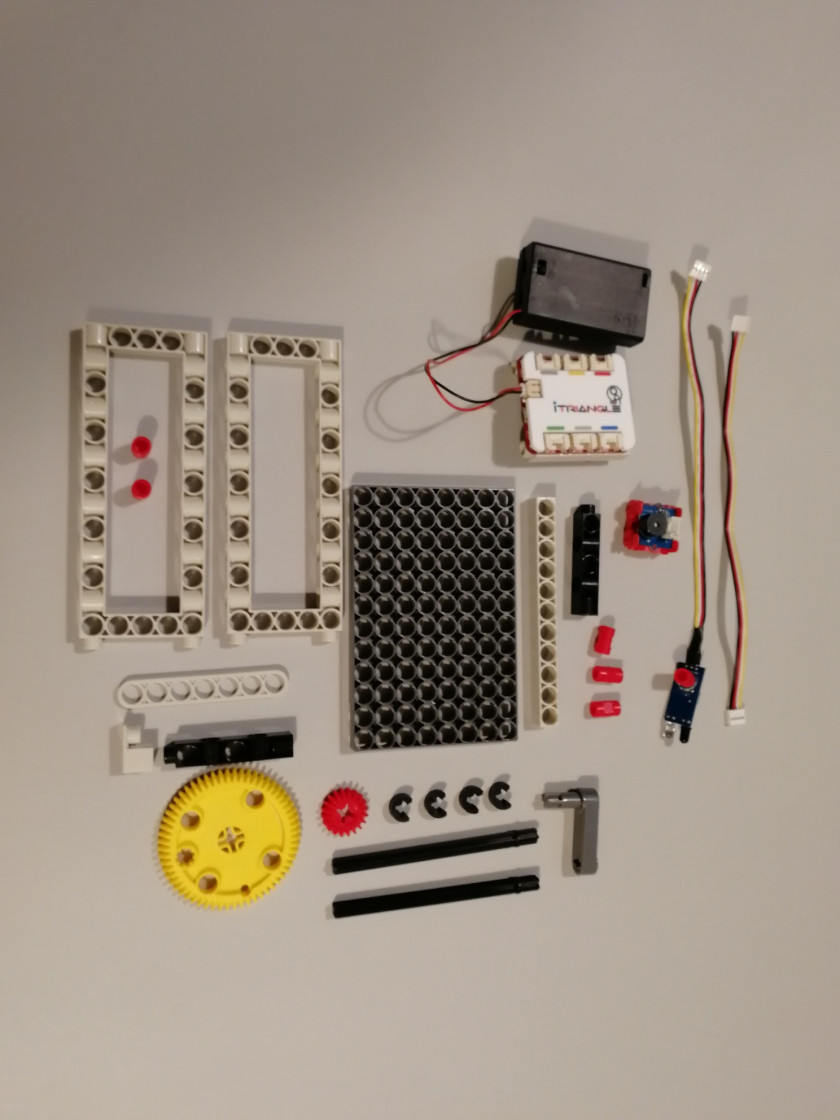
Introduction:
Cogwheels or gears working together are called a transmission. Transmissions transfer the rotational effects of an engine (a "drive") or other equipment to another part of the machine (e.g., a wind power plant). The drive and driven mechanism in this experiment will be gears. A handle on the first gear will be the drive, and the driven mechanism will be another gear next to the first gear.
Tasks:
- Connect the gears to rotate in opposite directions.
- Connect the gears to rotate in the same direction.
- Connect the gears to make the driven wheel rotate more quickly.
- Connect the gears to make the driven wheel rotate more slowly.
In the tasks above, count how much faster / slower the driven wheel is than the drive wheel. Use the IR gate to count the number of revolutions of the driven wheel.
Tutorial:
- Connect the gears to rotate in opposite directions.
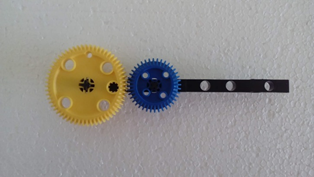
You can use any of the gears. If they are connected as pictured, they will always rotate in opposite directions regardless of their size.
- Connect the gears to rotate in the same direction.
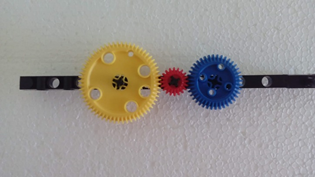
To make two wheels rotate in the same direction, you need to use a third wheel between them. The size of the wheels is not important in this task.
- Connect the gears to make the driven wheel rotate more quickly.
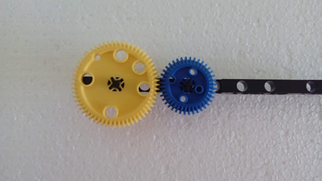
To make the driven wheel rotate more quickly, use one bigger and one smaller wheel. When the drive wheel is bigger than the driven wheel, the driven wheel is faster. Can you guess what happens when you use a smaller wheel as the drive?
- Connect the gears to make the driven wheel rotate more slowly.
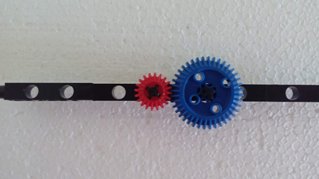
If you did the previous task easily, you may have already found the answer to this task. Which wheel do you need to make the other one turn more slowly? Is it the bigger or smaller one?
- Use the IR gate to count the number of revolutions.
- Construct a simple stand with iTriangle online and connect the sensors and components as pictured below. Connect iTriangle online and upgrade its firmware by following these steps.
- Connect the wheels to the stand as pictured below.
- Start the program.
- Start turning the drive wheel. Now comes the challenging part. To compare the number of revolutions of each wheel, you need to count how many times you turn the handle as well as how many beeps the buzzer produces. Do you find it easy or hard to do two things at once?
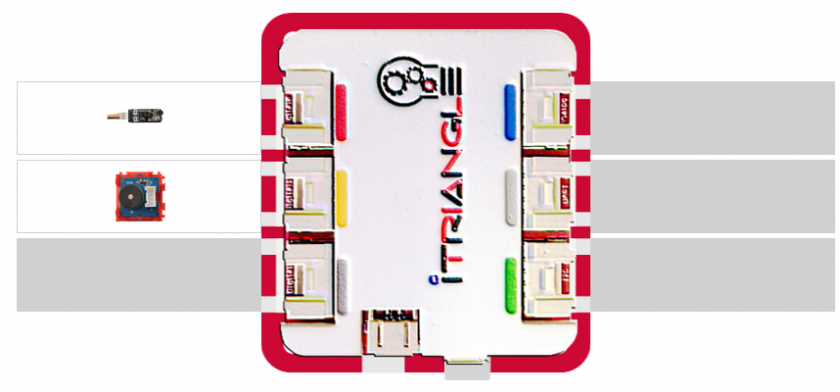
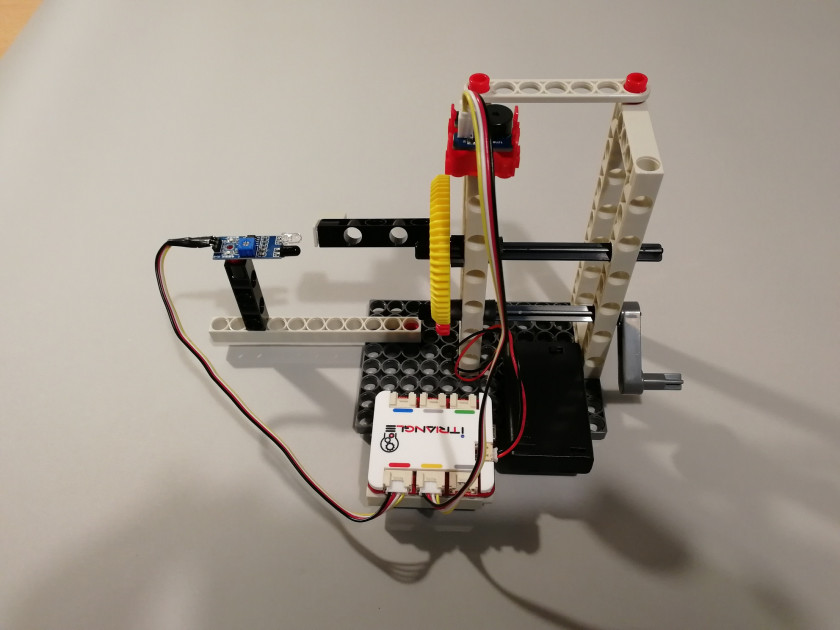
Extra mile:
Now is the time to do some math. With the help of the equations below, can you calculate how much more quickly or slowly each driven wheel is compared to the drive wheel? Create different combinations of wheels and compare the revolutions of the driven and drive wheels. Write your findings in the table below. Compare the results and answer the following question—is there a correlation between the number of teeth on each wheel and number of revolutions of the driven and drive wheels? Explain your findings.
Example:
If the driven wheel has three times more teeth than the drive wheel, then the driven wheel will have three times less revolutions than the driven wheel.
Worksheet:

Gear parameters:
d1 ... drive wheel diameter; d2 ... driven wheel diameter
z1 ... number of teeth on the drive wheel; z2 ... number of teeth on the driven wheel
N1 ... number of revolutions of the drive wheel; N2 ... number of revolutions of the driven wheel
Depending on the method and combination of gears, the drive and driven mechanism can rotate either in the same direction or oppositely, with the resultant rotational movement of the driven mechanism accelerated (transmission to faster speed) or decelerated (transmission to slower speed). Another option is direct transmission, where the speeds of the drive and the driven mechanism are the same.
Quantitatively, the transmission characteristic is given by the ratio i, which is calculated as follows:
i = d2 / d1 = z2 / z1 = N1 / N2
If i < 1, then transmission is to a faster speed; if i = 1, then it is direct transmission; if i > 1, then transmission is to a slower speed.
There are 3 types of gears in the set:
- Yellow gear with 60 teeth
- Blue gear with 40 teeth
- Red gear with 20 teeth
Examples of good practice:
Technical notes:
IR Gate can be a little challenging to operate. To make it easier, make sure there is plenty of light around but without direct sunlight and no shadows. You might need a small screwdriver to adjust the sensitivity of the IR gate by turning the small white disc in the blue casing. This usually only needs to be done once.

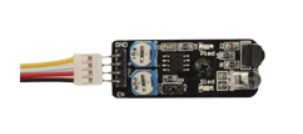
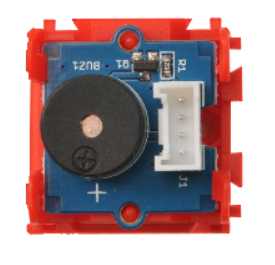
Žádné komentáře